After the 2016 U.S. Election, some people, especially many young voters, may have been disappointed and depressed. However, many amongst the elder generation in California still have hope and confidence in the new president and his administration in the coming new year, because they have experienced America’s eternal hopes and ideals during the presidencies of John F. Kennedy and Ronald Reagan.
As President Kennedy said, “A man may die, a nation may rise and fall, but an idea lives on.”We may find inspiration in the legacy of our 40th president at the Ronald Reagan Presidential Library and Center for Public Affairs in Simi Valley, Calif., which is the final resting place of Reagan and his wife Nancy.
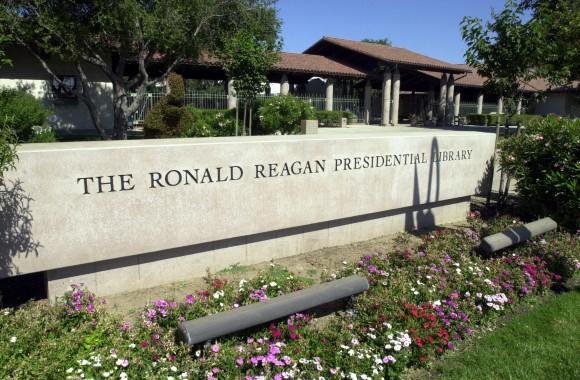
Reagan is famous for promoting “Reaganomics,” a platform of smaller government, lower taxes, fewer regulations, and greater economic freedom.
His critics say the president’s plan resulted in a large increase in the country’s budget deficit, leading to eventual tax increases.
However, the Reagan Library documents remarkable results during his presidency. The country experienced one of the longest peacetime expansions in history—96 straight months. Almost 20 million new jobs were created. Inflation was tamed and interest rates fell dramatically from 12.4% to 4.6%. Unemployment fell from 7.4% to 5.2% The stock market nearly tripled in value. Americans saw their taxes cut by almost a third.
For federal income tax, the top individual taxpayer rate was cut by 50% to 28%. Mortgage interest rates dropped from 15.4% to 10.3%. Total tax receipts doubled from $517 billion to $1,030 billion. Income tax receipts rose from $347 billion to $549 billion. The Dow Jones Industrial Average rose from about 970 to 2,235. The nation saw economic growth for 96 consecutive months.
However, Reagan still left office with a much larger national debt, and his new Department of Veterans Affairs was popular but expensive.
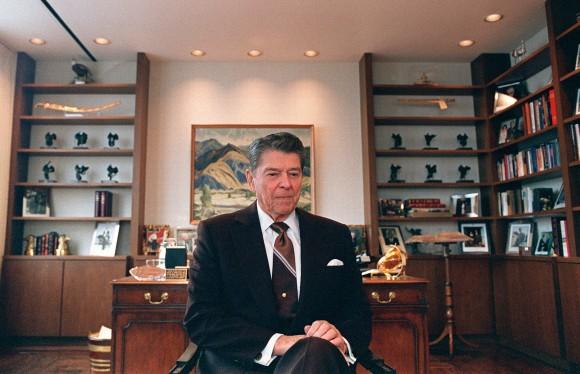
From a $200 million deficit to $5.7 billion in taxes returned to Californians
As governor of California in 1966, Reagan inherited a state government with a deficit of more than $200 million. California law required a balanced budget, which compelled him to raise taxes in his first term. But he also imposed spending cuts, began a hiring freeze, and canceled many projects. By 1968, California had a $100 million surplus.In two terms, Ronald Reagan eliminated state income taxes for the poorest families and reduced taxes on low-to-middle income wage earners. He returned $5.7 billion in taxes back to Californians.
During an informational video at the Reagan Library, the narrator states, “The prosperous dream of the past decade gave way to widespread discontent and protest, and the chaotic protesting crowds’ voice, ‘We won’t go!’ That was most evident in California in the middle of the 1960’s, reeling from the highest tax and crime rates in the nation and severe environmental pollution. California was yearning for change. Ronald Reagan delivered the right message at the right time—lower taxes, fewer regulations, and greater economic freedom—and won the voters’ trust.”
When Ronald Reagan took office, California’s welfare program was a huge burden on a financially strapped state. By 1971, the cost had reached $3 billion a year. Governor Reagan undertook a sweeping welfare reform plan. It stiffened penalties for fraud, removed some employed recipients from welfare, and required adult children to help support their parents on welfare, among other changes. By 1974, welfare caseloads dropped 20 percent, benefits rose 43 percent for residents with no income, welfare fraud dropped, and California saved hundreds of millions of dollars.
Reagan said, “By tightening eligibility standards and eliminating loopholes, we turned a monthly increase in the welfare caseload of 40,000 into a monthly decrease of 8,000.”
In 1968, the federal government passed a new law encouraging work training for welfare recipients. In his second term, Governor Reagan committed to reforming California’s welfare program. This program got 76,000 people off the welfare rolls and put them into productive jobs.
Ronald Reagan also increased funding for California’s public schools during his administration and also supported education beyond the classroom. Education spending went up by 89%, and aid to the university system rose more than 105%.
From documents shown in the Reagan Library, in 1971, Governor Reagan’s advisors urged him to approve California’s participation in a continuing work-study program for disadvantaged college students. A federal grant paid part of the students’ wages. The students worked in various offices of the state government, and the jobs encouraged them to think about careers in public service. Governor Reagan approved.
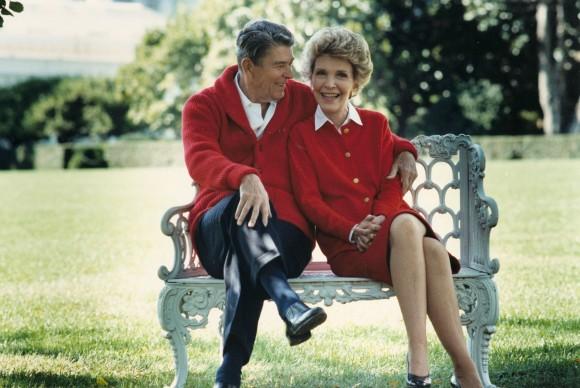
Firm on loyalty and moral code
Though he is known as a great communicator, Reagan showed his strong will in two cases. One is that he stopped the unrest on the state’s college campuses in the 1960s. As governor, he tightened laws against unlawful assembly. He also suspended state financial support of students convicted of campus disturbances and called in the National Guard to quell unrest at the University of California, Berkeley.Reagan said: “Anarchy in the name of academic freedom on the campus and on our streets will not be tolerated.”
The second case is the strike of the Professional Air Traffic Controllers Association on August 3, 1981. It was President Reagan’s first national emergency. The controllers’ contract specifically prohibited strikes, and the walkout threatened to paralyze the nation’s air travel.
In a show of good faith, President Reagan gave the controllers 48 hours to return to work. If they didn’t, they would lose their jobs. On August 5, he fired over 11,000 strikers. Air traffic slowed by half temporarily after the strikers were fired, but new controllers were trained, and replacements gradually filled in afterward. That day, he showed that he would uphold the rule of law and stick to his decisions.
Reagan’s rule of law showed that without loyalty, soldiers would not have combative abilities; without following discipline in their schools and teachers, students would not acquire knowledge; without respect to their parents, children would not be brought up well-mannered; without following rules in their careers, people would not do a good job in their work.
A wise teaching from the East states, “Without beliefs, human beings would have no moral standards; the human mind would not have good thoughts and it would be overcome by wicked thoughts. The moral values of the human society at that time would decline rapidly.”
The values we can see from Reagan’s speeches are simple and clear, and his actions show the power of leadership when those leaders adhere to a moral standard.
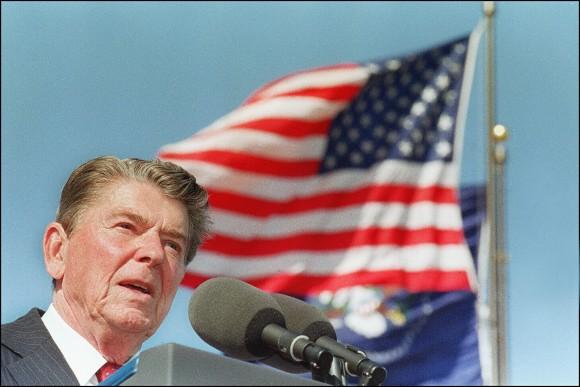
Peace Through Strength
With prosperity at home, President Reagan could focus on his lifelong mission to end communism abroad.Ronald Reagan came to the leadership of the free world with a new strategy for securing peace and transcending communism. His vision included:
• Rebuilding America’s military might
• Fearlessly pointing out the evils of communism, promoting democracy, and reaffirming America’s moral leadership on the international stage
• Ending the policy of containment and supporting freedom fighters to roll back communism around the world
• Protecting the American people through the Strategic Defense Initiative (SDI)
• The reduction and eventual elimination of the threat of nuclear weapons through face-to-face diplomacy and improved communication.
What was the biggest threat to the nation’s security? Although people’s answers may now be varied, President Reagan pointed it out clearly on May 17, 1981.
“The West will not contain Communism; it will transcend Communism. We will . .. dismiss it as a sad, bizarre chapter in human history whose last pages are even now being written,” he said.
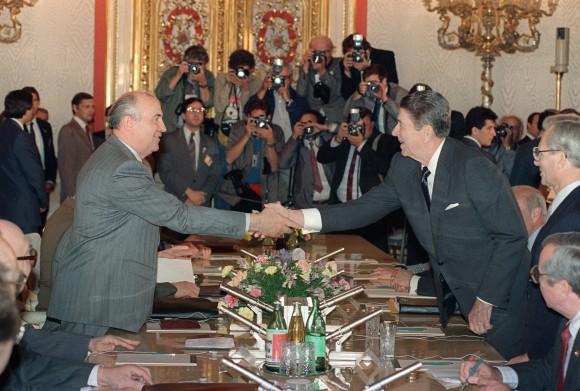
Should the United States try to preserve détente with Communist countries?
Three previous presidents followed a policy of détente with the U.S.S.R.—a gradual relaxing of tensions, more trade, arms agreements, and frequent talks. President Reagan’s approach was to expose the aims of the Soviets and describe their deeds in the plainest terms. He believed the Soviet Union had taken advantage of détente to build up its military and subvert governments around the world.President Reagan expressed his mind clearly in a televised speech. “The defense policy of the United States is based on a simple premise—the United states does not start fights. We will never be an aggressor. We maintain our strength in order to deter and defend against aggression—to preserve freedom and peace.”
According to Lou Cannon, biographer of President Reagan, “Ronald Reagan didn’t believe that we should just build up to be stronger than the Russians. He believed that we should buildup so that the Soviets would have to come to the bargaining table and that we would be in a stronger position because we had sufficient military strength.”
White House Chief of Staff James Baker recalled, “There was a substantial military build up, in terms of increasing our force structure, in terms of weapons modernization, in terms of SDI (Strategic Defense Initiative).”
President Reagan’s unshakable, lifelong opposition to communism and staunch support of human rights helped to free hundreds of millions of people around the globe.
He wrote in his autobiography, “We spent billions to keep American troops stationed in Western Europe and South Korea for the purpose of containing Communism. Sometimes the price of defending freedom was even higher. Many brave American’s made the ultimate sacrifice.”
“An America that is militarily and economically strong is not enough. The world must see an America that is morally strong with a creed and a vision. This is what has led us to dare and achieve. For us, values count,” said Reagan.
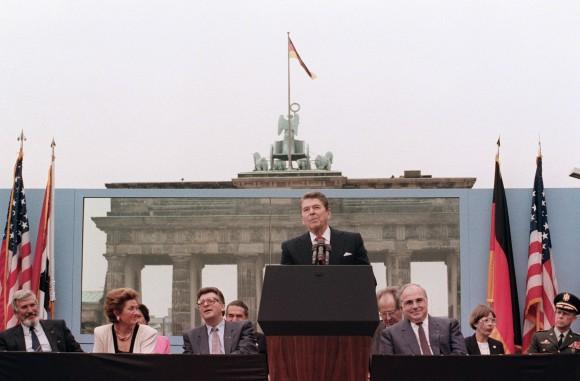
Bringing the Cold War to an end
Ronald Reagan and Mikhail Gorbachev transformed relations between the United States and the Soviet Union at four summits—in Geneva, Switzerland; Reykjavik, Iceland; Washington, D.C; and Moscow, U.S.S.R.Between, November 1985 and May 1988, they signed two historic treaties and negotiated dramatic reductions in nuclear arms, thus beginning the end of the Cold War.
The personal relationship that grew between Reagan and Gorbachev helped to change the world. At times, their negotiations erupted into openly angry clashes. But both men were ultimately bold enough to trust each other, or as President Reagan said repeatedly, “trust but verify.”
In Ronald Reagan’s autobiography “An American Life,” he recalled, “I might have helped him see that the Soviet Union had less to fear from the West than he thought...Whatever his reasons, Gorbachev had the intelligence to admit Communism was not working, the courage to battle for change, and ultimately, the wisdom to introduce the beginnings of democracy, individual freedom, and free enterprise.”
According to an AP report, on June 6, 2004, former Soviet leader Mikhail Gorbachev told reporters at the Gorbachev Foundation, “I take the death of Ronald Reagan very hard...I deem Ronald Reagan a great president...He has already entered history as a man who was instrumental in bringing about the end of the Cold War.”
The history of the United States displays many little-known miracles: At moments of great crisis, notable leaders have witnessed good fortune as a reflection of divine providence. Today, as we enter into the new age, our memories of President Reagan can help uphold our hope.
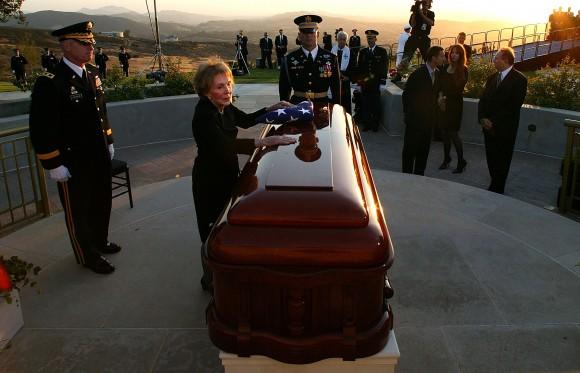

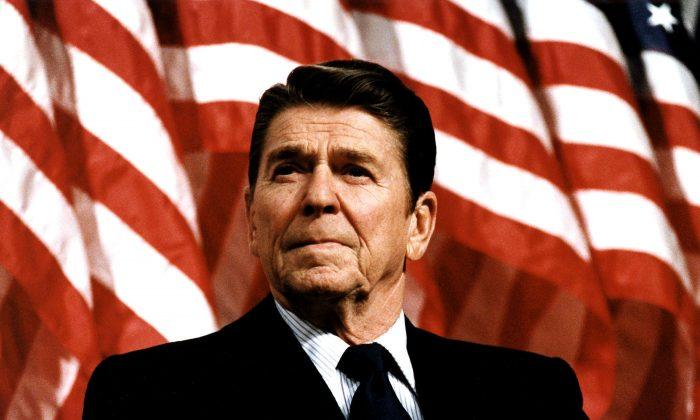
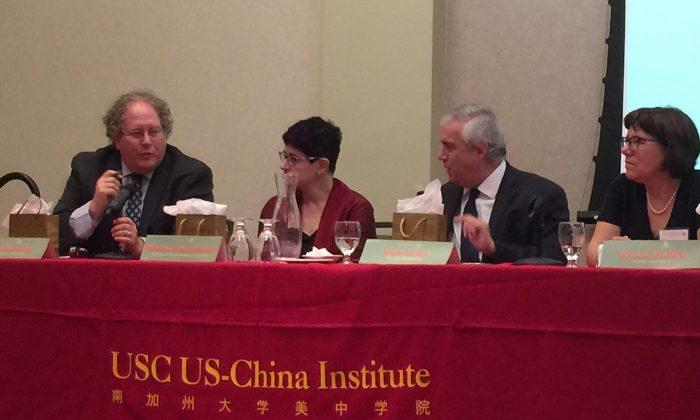
Friends Read Free